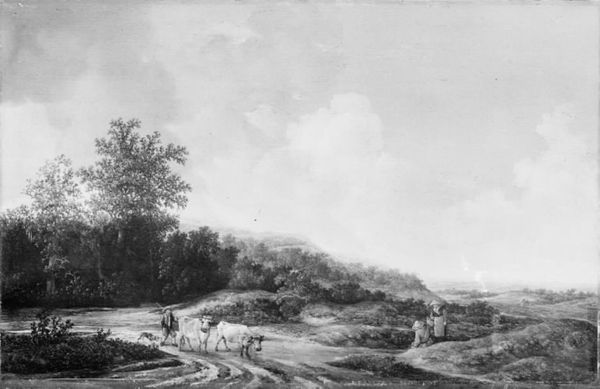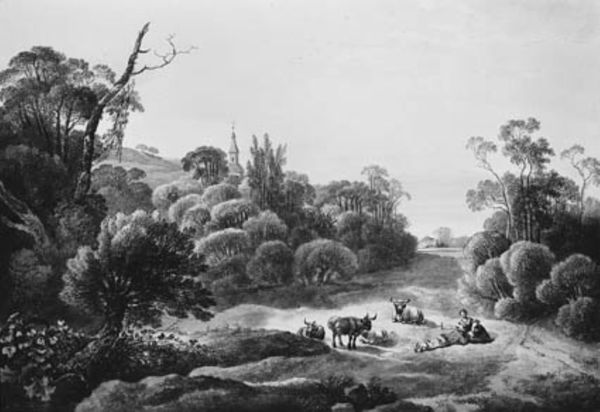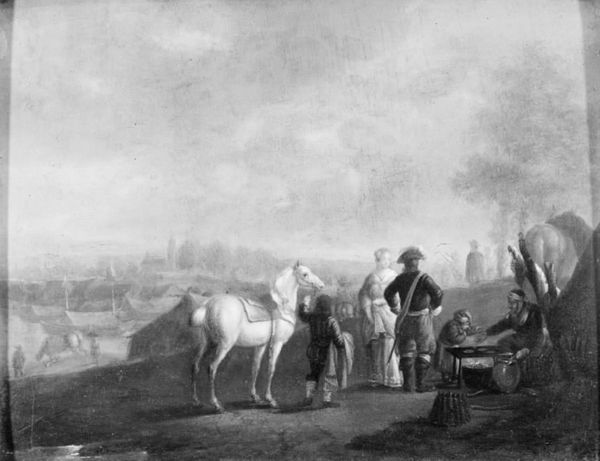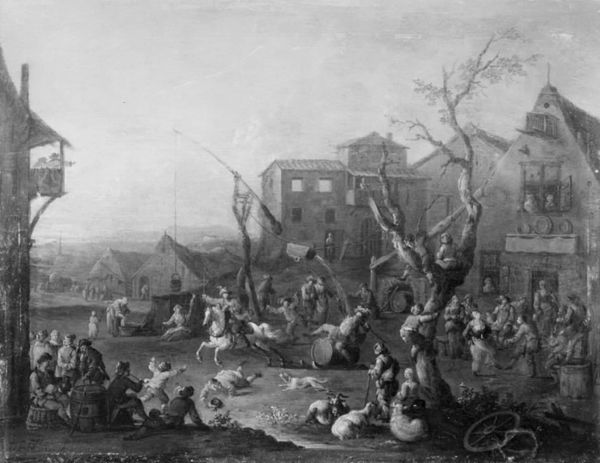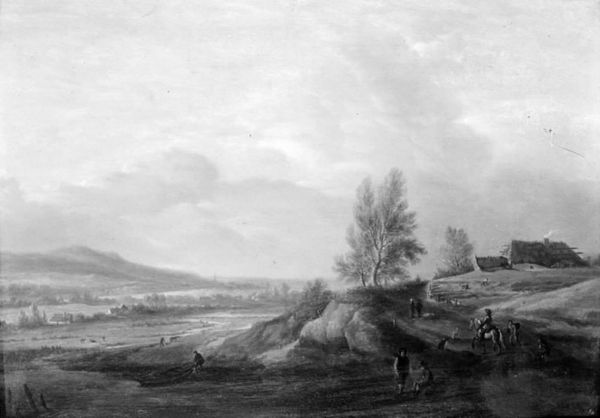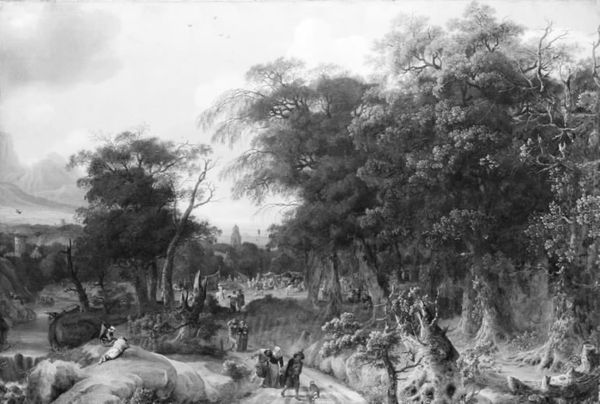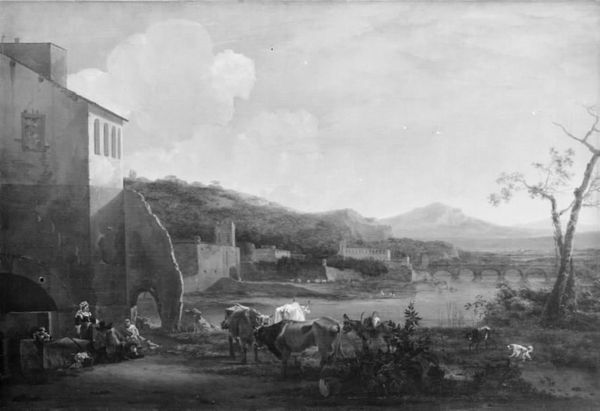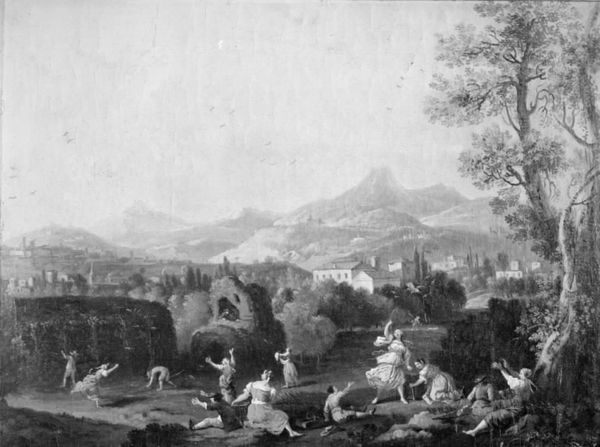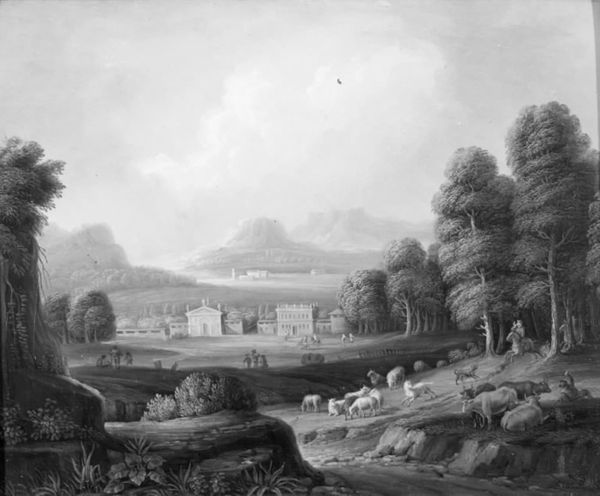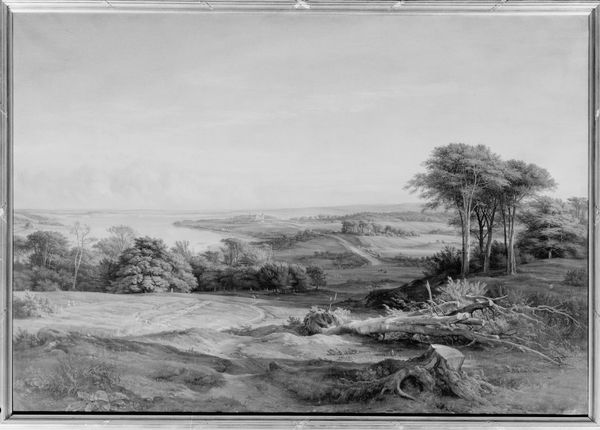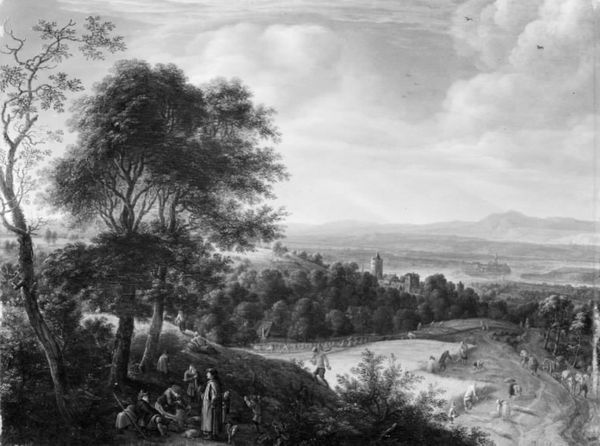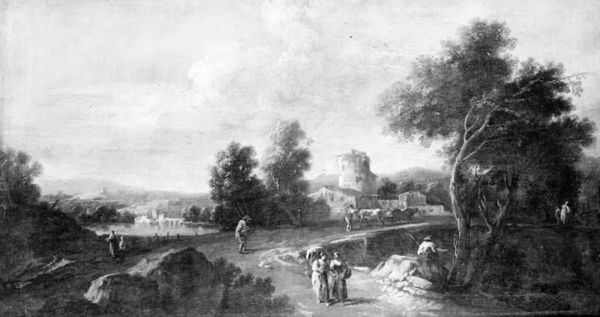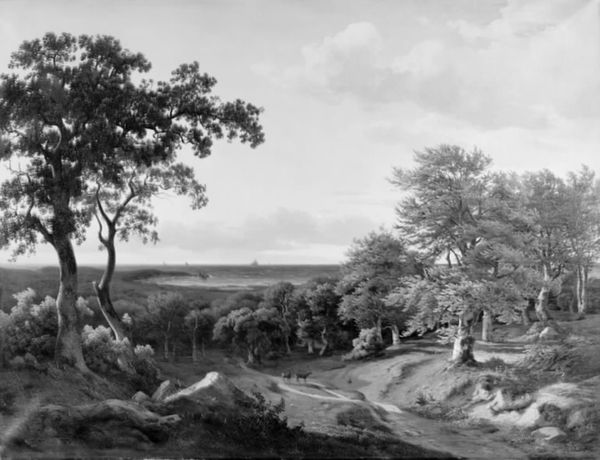
Dimensions: 53 cm (height) x 68.5 cm (width) (Netto)
Curator: Mathias Blumenthal's "The Sawmill of Tistedal," painted between 1734 and 1763, offers us a monochrome vista on canvas. I find the contrast stark, almost severe. What do you make of it? Editor: It feels incredibly...stark. Almost like a photograph, even though it’s a painting. The title makes me think about industry and labour, but there's this strange scene with people wrestling in the foreground, like a genre painting. I'm not sure how it all fits together. What should I be seeing here? Curator: It is a confluence of many streams! The starkness, to me, speaks to the often brutal conditions of labor. The sawmill itself was built on stolen Sami land, initially for Norwegian aristocrats; these are violent undercurrents that shaped Norway as much as they shaped wood. What do you see when you examine the figures more closely, their roles in this social landscape? Editor: Now that you mention it, the wrestling seems almost…staged, definitely theatrical. And then you have someone standing with what appears to be a whip? Are they connected to the mill in some way? And could the wrestling represent social hierarchy? Curator: Exactly! Think of the bodies depicted here, placed on the margins, either competing for scraps of space or physically subdued. This could be read as commentary on the limited opportunities available within an increasingly industrialized society. Do you notice anything interesting in terms of the spatial relations, and how it may imply power dynamics? Editor: I do, there are many clues to understand how exploitation becomes normalized within structures of colonial progress! Thanks so much! Curator: Always a pleasure, especially when uncovering hidden narratives within art.
Comments
No comments
Be the first to comment and join the conversation on the ultimate creative platform.
